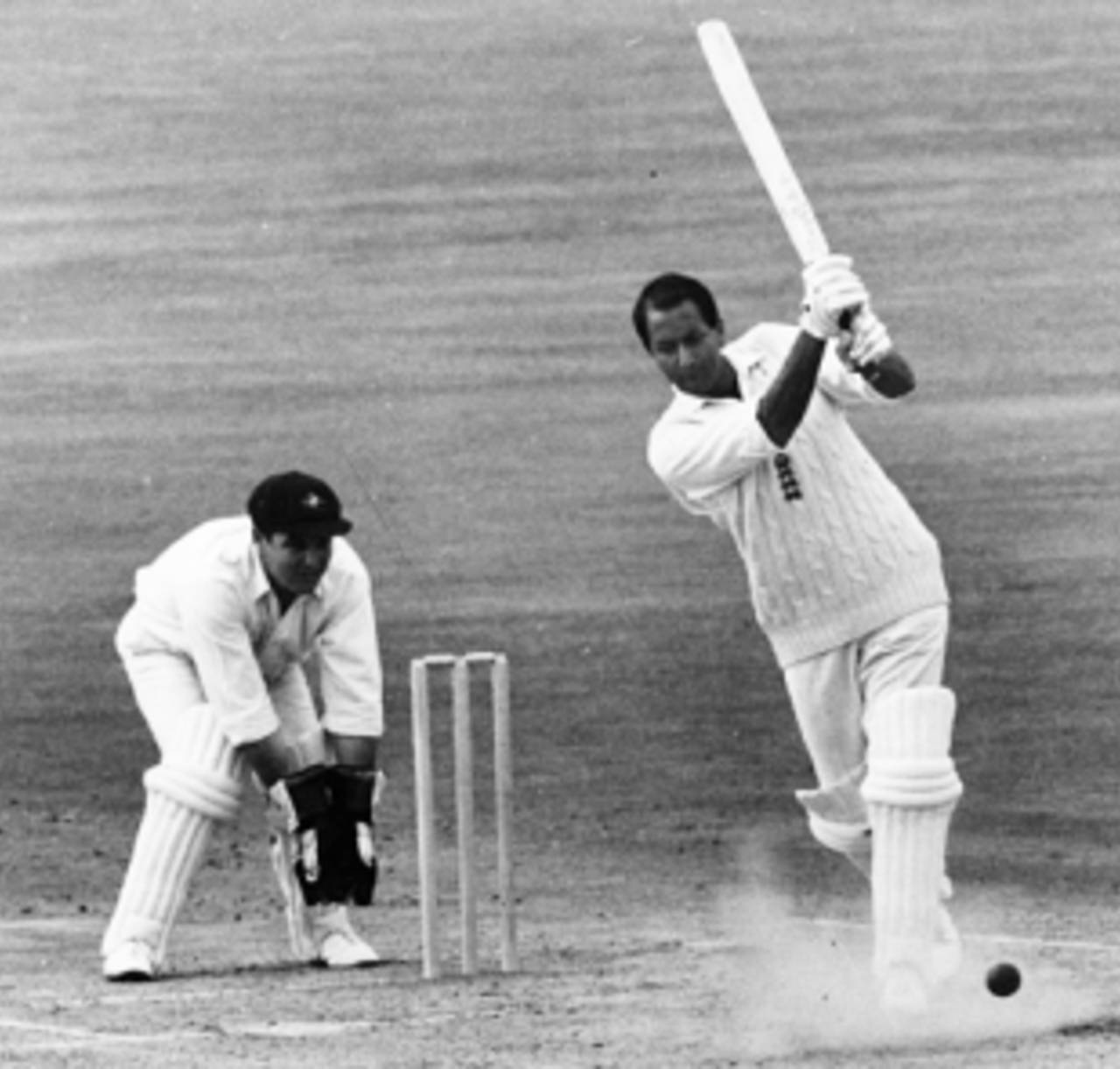Picking an all-time South African Test XI is, at once, a discomforting and essentially jaundiced task. The exercise is at least relatively straightforward in the case of most other countries: you mull over profound statistics and scorecards from Test-match conflict down the decades and make your call, all worthy customers duly considered.
It is the correct and obvious procedure: depart from that template and the exercise becomes a waste of time, a meaningless flight of fantasy. What is the purpose of a composite Test selection if official Test performance is not your absolutely crucial yardstick?
So this is where the uneasiness, from a South African point of view, creeps in: there is a very good chance, considering the country's unique and lengthy legacy of racial disparity, that your combination will be lopsidedly yet unavoidably all-white.
That is, unless you have made room, perhaps, for a post-isolation Makhaya Ntini or Herschelle Gibbs (both would warrant consideration - perhaps just no cigar), or creatively plumped for, say, the delightfully unorthodox Paul Adams (Test bowling average 32.87) above Hugh Tayfield (25.91) as your spinner.
But any South African Test team before that, during the particularly cynical apartheid republic but also under the colonial-era brand of racial segregation, is glaringly bereft of black representation. Reprehensible, yet a cold fact, and one that, I don't think, can be romantically undone for the sake of this exercise.
Of course the temptation stares you in the face like an orchard at the end of a gruelling desert walk: how dearly you desire to install Basil D'Oliveira, the Cape Coloured printer's assistant who remains arguably the foremost icon of the stubbornly vibrant non-racial cricketing fold in pre-democracy South Africa. If "Dolly", now 78, could famously forsake his homeland and play 44 Test for England from the advanced age of 34, averaging 40.06 with the bat in the process, just how might he have blossomed in a fuller career for his country of birth?
But we will simply never know: in Test numbers, he is entirely an England cricketer. Ditto the 79-Test Allan Lamb, born in Langebaanweg, 120km north-west of D'Oliveira's Cape Town birthplace, also to prosper for England, instead, while apartheid was at its most dogmatically embedded.
Even the late Hassan Howa, doyen of non-racial cricket and a founder member of the South African Cricket Board of Control (Sacboc), deemed it pointless trying to pick amalgamated "all-time great" teams from the country's once-fragmented and stormy landscape. "Totally different playing fields," the famously outspoken administrator boomed to this writer, not long before his death in 1992. "You could never do a fair comparison."
The lone, apt substitute, then, is to separately honour those who might have achieved greatness for South Africa, but were thwarted either by crude discrimination or because their consciences, as apartheid gradually unravelled and began making some token concessions, would not allow them to cross the floor to the still-"establishment" fold prior to democracy.
A poignant event in the process of healing took place in 2000, when a South African "Cricketer of the Century" exercise took place, endorsed by the United Cricket Board (now Cricket South Africa). Graeme Pollock earned the chief laurel, but included in a shortlist of 10 were three black cricketers who never represented South Africa in Tests: the shoo-in D'Oliveira, and also Frank Roro and Eric Petersen.
Any South African Test team during the apartheid republic but also under the colonial-era brand of racial segregation, is glaringly bereft of black representation. Reprehensible, yet a cold fact, and one that, I don't think, can be romantically undone for the sake of this exercise
Roro is widely considered the first great black African cricketer, and he captained the historic maiden Bantu Cricket Board SA XI in a landmark tournament among non-racial cricket organisations in Johannesburg in 1951. He was 53 by then, yet scored a swansong century at the event, against the SA Indians, and according to Prof Andre Odendaal's seminal The Story of an African Game, had registered some 20 centuries for the Transvaal Bantu team since 1934.
Petersen, a contemporary of D'Oliveira, was a medium-pace offbreak bowler who averaged 8.33 in three Sacboc XI "Tests" on a tour of Kenya in 1958-59. "On the matting pitches used for Sacboc matches he was virtually unplayable," noted the SA Cricket Annual of 2000.
Many other players from the non-racial arena command iconic status within that constituency. Their ranks include Eric Majola and his son Khaya, Lefty Adams, Saait Magiet, Cecil Abrahams and Vincent Barnes (presently the South Africa bowling coach and the all-time top wicket-taker in Sacboc/SACB first-class cricket, with 287 at 11.32).
Of course there is a shorter period - South Africa's world-enforced dormancy from Tests between 1971 and 1992 - when some luminary white cricketers could not represent their country either. At each end of that period were lucky ones - like Barry Richards, who snuck in four Tests just before the ban, averaging 72 in the famous clean sweep of Bill Lawry's 1969-70 Australian tourists; and Peter Kirsten, who benefited shortly after it was lifted, managing a poignant, long-in-the-tooth century at Headingley in 1994, more than 20 years on from his first-class debut. But those to be more comprehensively snared by isolation's clutches included batsmen like Hylton Ackerman snr, Henry Fotheringham and Ken McEwan, pace bowlers Garth le Roux, Stephen Jefferies and Vintcent van der Bijl, legspinner Denys Hobson, wicketkeeper Ray Jennings and allrounder Clive Rice, although the last-named player led South Africa's re-welcoming, three-ODI visit to India in 1991 at the advanced age of 42.
Robert Houwing, chief writer for Sport24.co.za in South Africa, is thought to have been the first white major newspaper cricket writer in South Africa to personally cover Howa Bowl (non-racial first-class) as well as Currie Cup cricket matches, a few years before unity was achieved
